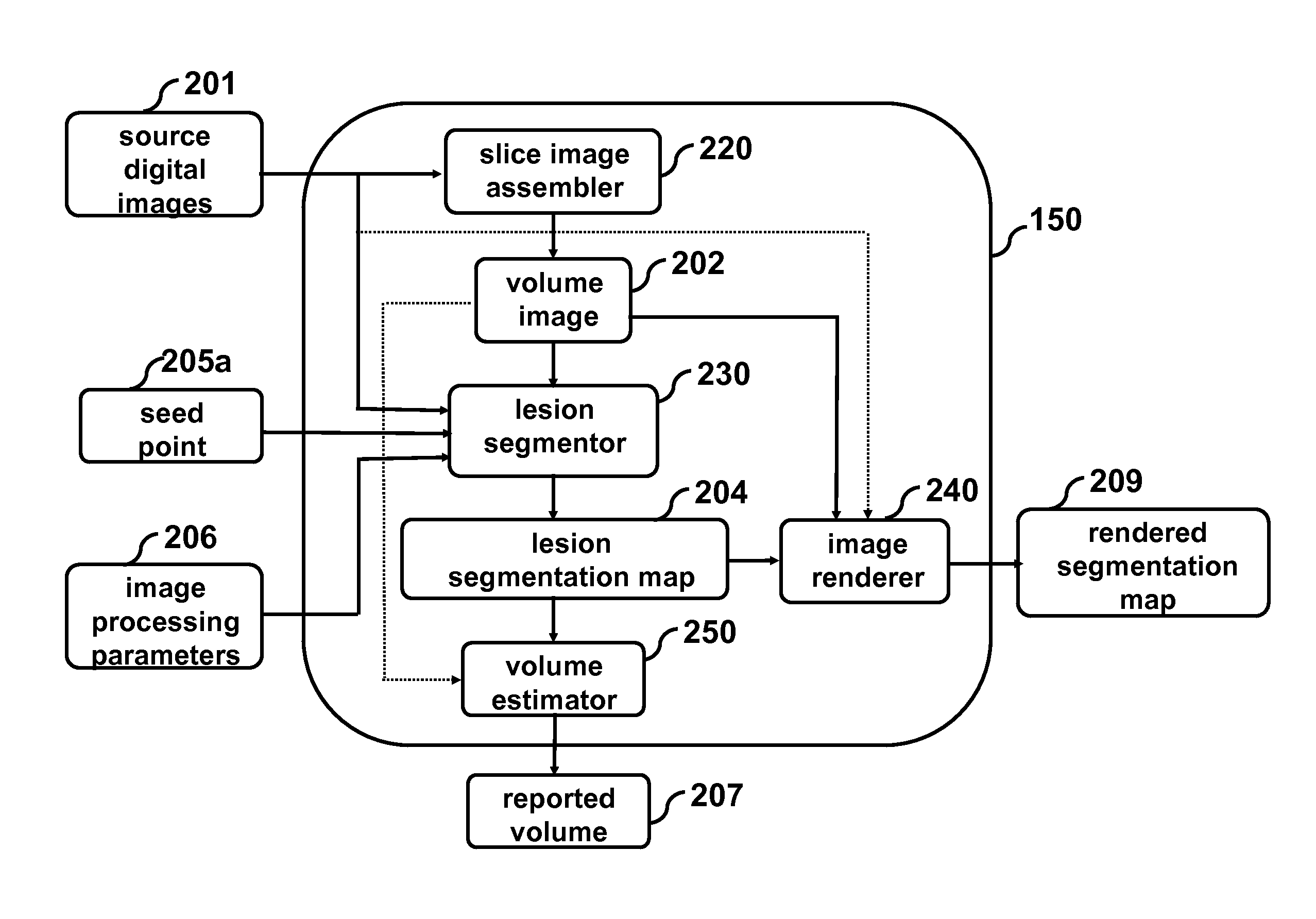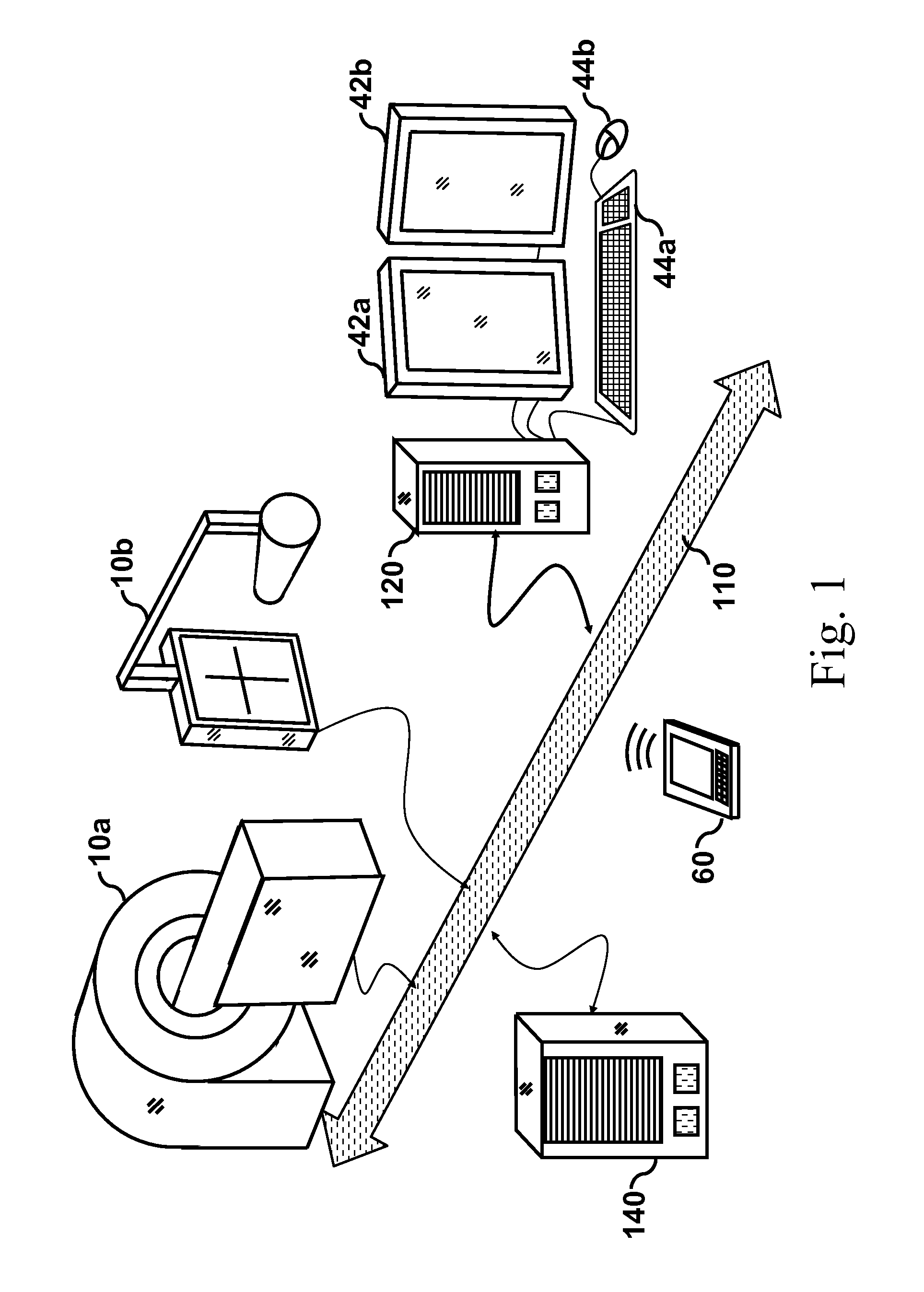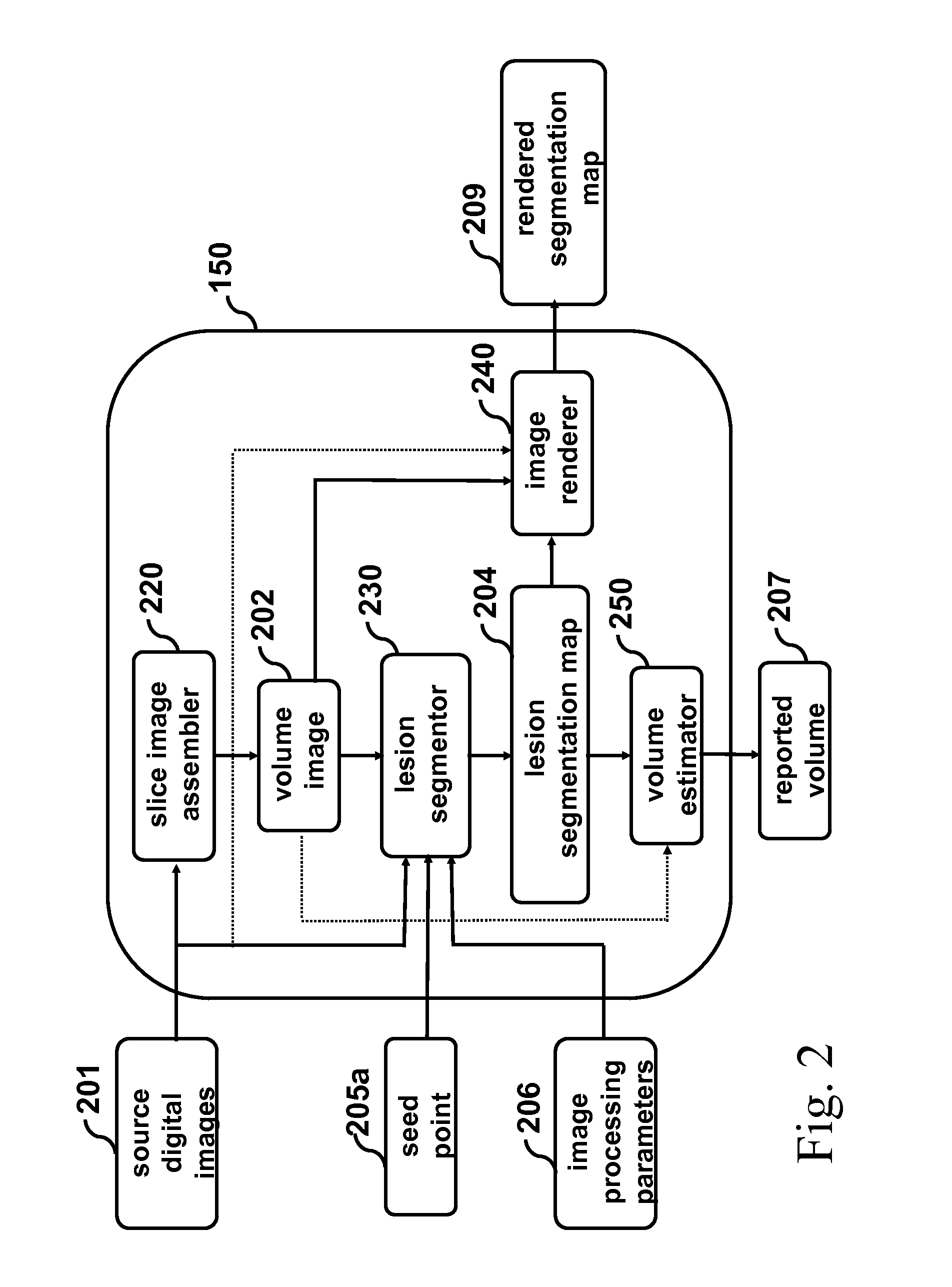Analyzing lesions in a medical digital image
a digital image and lesion technology, applied in the field of digital imaging, can solve the problems of difficult to distinguish between the lesion and other normal anatomy structures, difficulty in segmenting the voxels in the thoracic ct image, and difficulty in distinguishing between the abnormal lesion tissue and the tissue associated with normal pulmonary structures
- Summary
- Abstract
- Description
- Claims
- Application Information
AI Technical Summary
Benefits of technology
Problems solved by technology
Method used
Image
Examples
Embodiment Construction
[0027]Many medical imaging applications are implemented via a picture archiving and communications systems (PACS). These systems provide a way for displaying digital images acquired by a wide variety of medical imaging modalities such as, but not limited to, projection radiography (x-ray images), computed tomography (CT images), ultrasound (US images), and magnetic resonance (MR images). Each of the above mentioned medical imaging modalities contain slightly different diagnostic information. In particular, CT and MR images when viewed and studied by radiologist, can reveal much detail about a patient's 3-dimensional internal anatomy. Computer algorithm technology can also be applied to medical images to enhance the rendering of the diagnostic information, to detect an abnormal condition, i.e., computer aided detection (CAD), and to make measurements relating to the patient's condition, i.e., computer aided measurement (CAM).
[0028]The present invention represents an algorithmic compu...
PUM
 Login to View More
Login to View More Abstract
Description
Claims
Application Information
 Login to View More
Login to View More - R&D
- Intellectual Property
- Life Sciences
- Materials
- Tech Scout
- Unparalleled Data Quality
- Higher Quality Content
- 60% Fewer Hallucinations
Browse by: Latest US Patents, China's latest patents, Technical Efficacy Thesaurus, Application Domain, Technology Topic, Popular Technical Reports.
© 2025 PatSnap. All rights reserved.Legal|Privacy policy|Modern Slavery Act Transparency Statement|Sitemap|About US| Contact US: help@patsnap.com



